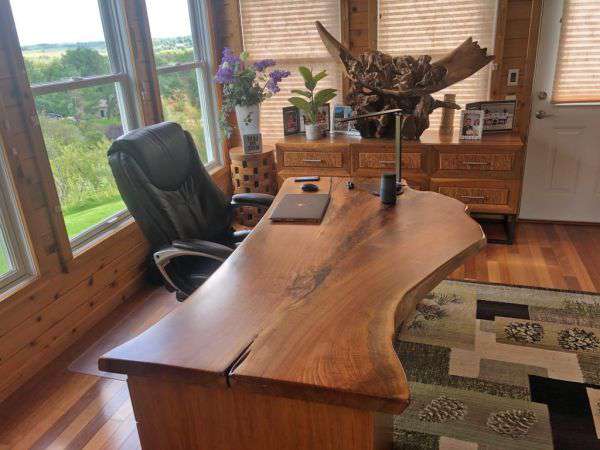Timber Desk Plans
Build Your Own Worktable Drafts - Finding the Best Framework Diagrams For Your Splendid Model

Attach temporary X-braces after you've double-checked to make sure posts are square with the headers. Don't despair when you unveil bland, gray top. Use baking soda to clean upholstery, too. Then just screw the plate to wall using a ratchet wrench and socket. While you're at it, screw the pairs of brackets to cleats. These two holes will complete the pathway for the front pipe support. Spots that are prone to blotching show up darker. Lay seat (https://woodcraftdiagrams.com/simple-desk-plans-blueprints) support across legs and fasten. Avoid this frustration by using fence brackets. Otherwise, mix in additional dry mix or water until you get the right consistency.
There are several sizes of self-centering bits available. You'll also find other pocket screw projects if you search for screws in search box at the top of page. Use a handsaw to rip plug flush, protecting wood surface with a piece of cardboard, and then sand. Hold each piece in place to mark the angle and cut it to size, then attach it with 8d nails before moving on to next piece. Use your circular saw to craft the board to size. Be sure to keep guide bushing pressed tightly against edge of the template. When you're installing cabinets on walls, use 'washer head' screws.
An experienced woodworker can complete this potting bench in a day. Next, clamp two panels together for a wider surface and rout the rabbet for the back and side panels. Placing adjacent sides in a carpenter's square ensures crisp 90-degree angles (click to read more) when you fasten the corners together. In most cases you'll be able to secure shelf to the trim and framing along sides and top of the opening. Rent a sod cutter to remove the turf from your building site and then dig out footprint plus a foot of wiggle room on each side. The only power tools you'll need are a circular saw and a drill, though a miter saw also helps.
You can now remove the temporary stringers. Set blade lightly on your nail and drag it toward end. Sand the edges with a finish or belt sander followed by 100-grit hand-sanding to gently ease the edges. Nail and glue sides, base and back together, then attach the rafters and gables. Shoe polish, eyebrow pencils, markers, watercolors, fingernail polish and iodine thinned to the right shade with denatured alcohol are just a few of the possibilities. Compared with most built-in furniture, this bookcase is easy to build. It was designed to be just the right length to tuck neatly beneath the Viking table, but you can make it shorter if you like.
Apply mating Velcro to frame and set panels in place. Wood moves as its moisture content changes. This handy chart will help you translate the nominal into actual. Check out my porch swing plans and my double chair with table plans, we well. A standard carbide blade set at correct height and some careful fence adjustments would give you great results. Tack or glue divider strips to the floor as needed for better socket sectoring. You can find this product in the hardware section in most home centers and online. Plus, we'll sift through confusing variety of mounts and help you choose the version that's best for your situation.
It was a simple idea, and it worked like a charm. The newspaper under tabletop prevents the metal clamps from staining lumber where they touch glue, and it catches squeezed-out glue so workbench stays clean. Remove the chains and pipes to paint the timber assembly. And don't forget, while you're resawing, make parts Q. You don't want to discover mistakes or misfits after glue is applied. And all of door frames are impostors. If you live in a climate susceptible to high moisture or termites, you may want to finish the insert with a coat of clear polyurethane to seal wood.
After installing two screws, close door to check its alignment with the adjacent doors. You don't need it to know how to sharpen a knife. For flush joints, clamp the piece you're screwing into. When the arbor is perfectly positioned, fill postholes with concrete. If you have to sand solid-wood edging flush with plywood, draw a pencil line on the plywood to tell you when the sander starts removing veneer. If you want to create a straight edge on a crooked board, mark board with a straightedge or chalk line instead. In order to get the job done quickly, you could even use scrap wood, it is in a good condition.
Center and trace the smaller disc on top of larger disc. Center cabinet box and screw it to the base. When you have to cut, shape, file, sand or finish something small, reach for your hot glue gun and glue piece to a pedestal stick. Install larger end of the new rail onto the crimped end of old rail.
